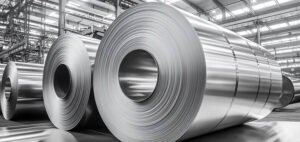With rising energy costs and the increasing rate of environment protection, industries across the globe are increasingly looking towards energy-efficient and eco-friendly solutions. Air heating is a basic industrial process in functions from manufacturing and processing to climate control and thus of great importance.
We will discuss the significance of energy-efficient industrial air heating systems and how they lead to a green and sustainable solution.
The Requirement for Energy-Efficient Industrial Air Heating
Conventional industrial heat processing tends to emulate inefficient technologies that lead to mass amounts of energy consumption, thereby increasing the cost of operation and environmental degradation. In regards to the requirement for a cleaner process, industries now seek energy-efficient air heating systems to meet various key purposes:
Cost Savings: Efficient heaters save on cost of operations by providing maximum energy efficiency. With the cost of energy still on the rise, companies look for alternatives with guaranteed performance at lower costs.
Environmental Impact: Traditional systems tend to affect fossil fuels, leading to greenhouse gases and climate change. On the contrary, energy-efficient heating systems consume cleaner sources of energy, lowering the carbon intensity of industrial processes.
Regulatory Compliance: nations are enforcing more stringent environmental regulations to limit industrial emissions. Using energy-efficient air heating technologies enables industries to keep abreast of such regulations and steer clear of possible fines.
Key Features of Energy-Efficient Industrial Air Heating Solutions
There are several technologies behind energy-efficient industrial air heating, providing a clean solution to respond to the need for heating. Some of its key features include:
High-Efficiency Combustion Systems: Sophisticated combustion systems maximize the efficiency of heat production in a way that more energy from the fuel is made available as useful heat.
Waste Heat Recovery: Industrial processes produce excess heat, usually wasted. Effective systems utilize waste heat recovery systems to recover and reuse the thermal energy, which helps in overall efficiency.
Renewable Energy Integration: The use of renewable energy resources like solar or geothermal for industrial air heating cuts down on the use of non-renewable energy resources and decreases the environmental footprint.
Smart Control Systems: Smart control systems provide accurate temperature control, with optimal energy use depending on current demands. This ensures that the heating process is at peak efficiency without wasteful energy use.
Case Studies: Real-World Implementation
Some industries have succeeded in incorporating energy-efficient air heating systems, testifying to the palpable advantages of embracing green modes of operation:
Motor Vehicle Production: Radiant heating systems with high efficiency in motor vehicle production facilities have registered considerable energy savings compared to conventional convection heating. Not only does this save money, but also the improvement of working conditions for workers.
Food Processing: Air heaters with high efficiency that are utilized in food processing equipment have enhanced the production efficiency along with being able to maintain high levels of hygiene. Recovery of waste heat from cooking is extremely effective in reducing wastage of energy.
Technologies Driving Energy Efficiency
Advanced Materials: Evolution of materials with high performance used in heating elements and heat exchangers has been a key aspect in maximizing the efficiency of industrial air heating systems. Not only can these materials withstand extreme temperatures, but also improve the transfer of heat, minimizing energy loss.
Combined Heat and Power (CHP) Systems: There are chances that industries can produce electricity and useful thermal energy from a single source of energy by integrating combined heat and power systems. CHP systems optimize overall efficiency by applying waste heat produced in the process of electricity generation for industrial uses.
Infrared Heating Technology: Infrared heating provides a focused and energy-saving solution through direct heat transfer to objects and surfaces without having to heat the entire space volume of air. The technology excels in applications with precise temperature control and response times.
Economic and Environmental Benefits:
Return on Investment (ROI): Although initial investment is needed in order to convert to energy-efficient air heating systems, long-term worth generally exceeds the price tag. Most companies see a comparatively brief return on investment in lessened power consumption and operating costs.
Employment Generation: The transition to environmentally sound practices in the manufacturing industry has generated jobs in research, development, production, and maintenance of efficient technologies. Not only does this generate economic growth, but it also generates innovation within the industry.
Global Carbon Reduction: Global adoption of industrial air heating energy-saving technologies is a major ingredient in the efforts to curb carbon emissions worldwide. As industry all over the world shifts to greener technology, the combined effect of preventing climate change keeps on increasing.
Challenges and Future Trends
Technological Integration: Integrating new technologies to existing industrial processes to meet energy-efficient heating of air requirements might be problematic as far as compatibility is concerned. Planning must be cautious, and implementation should be intentional.
Regulatory Support: Governments and regulators also have a significant role to play in pushing towards energy-efficient practices. Ongoing support through incentives, grants, and policy incentive can catalyze the utilization of sustainable heating solutions.
Industry 4.0 and digitalization: The path of digitalization and integration of concepts of Industry 4.0 make it possible to monitor and optimize industrial processes in real-time. Smart technologies have the potential to further optimize air heating systems by dynamically adapting to changing situations and optimizing energy consumption.
Increased consciousness towards the environment among consumers is impacting the consumer buying behavior. Companies that make sustainability and energy efficiency core objectives in their business operations can establish themselves as market leaders in their respective sectors with the congruence of consumer needs for eco-friendly products and services.
Businesses now incorporate sustainability in corporate social responsibility endeavors. Through active participation in protecting the environment and conducting energy-efficient business practices, businesses can improve their company reputation and build more effective customer, investor, and society relationships.
Not only individual companies, sustainability practices are being adopted throughout the entire supply chain. Suppliers and manufacturers are assessing and adopting energy-saving technology, causing a ripple effect within the industry and helping create a more sustainable society.
To New Frontiers
The path towards successful industrial air heating solutions is one of perpetual collaboration, innovation, and improvisation. The dynamic interaction between technological innovations, international partnership, and evolving social expectations insures that sustainable practices of heating are the foundation of future industrial production.
When industries take such multi-faceted measures, they solve prevailing problems by making the global industrial community sustainable, environmentally aware, and socially accountable.
Read More: Future Prospects of Ophthalmic Tonometer: Predictions and Outlook








